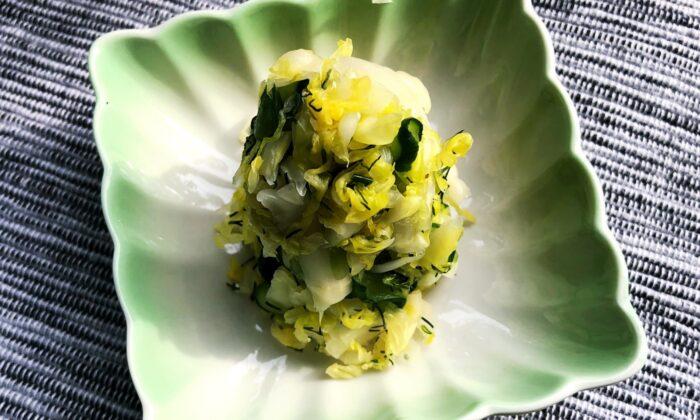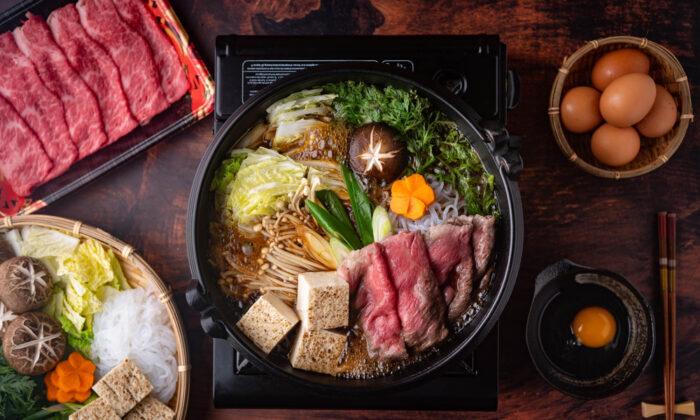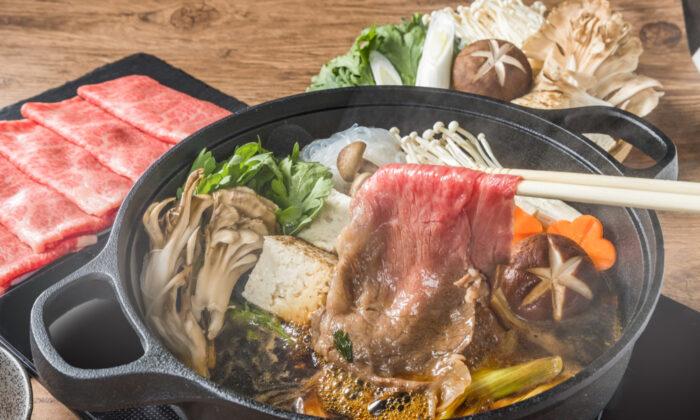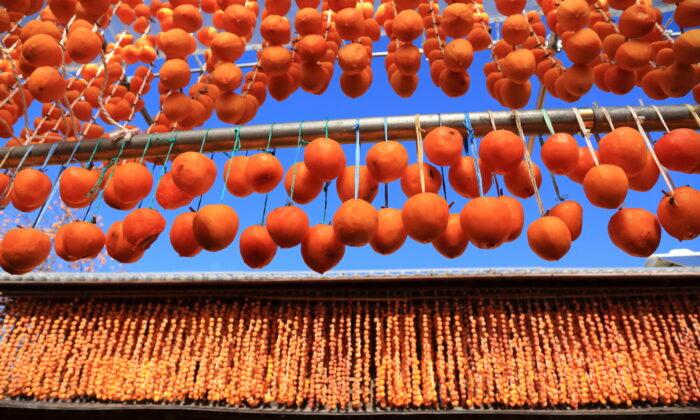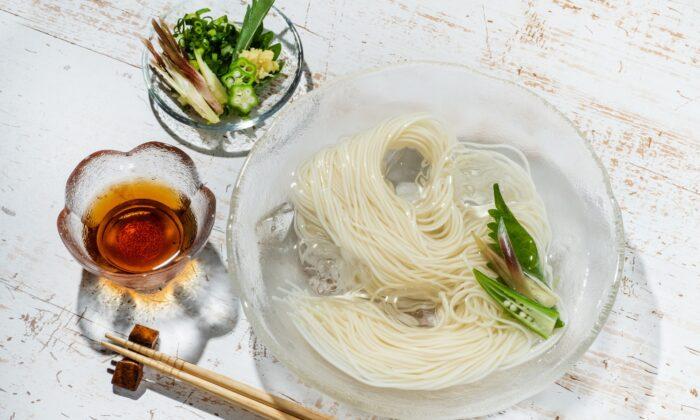Shiomomi, the salt-massaged method, is the perfect place to start making Japanese-style pickles, or tsukemono. This recipe is adapted with permission from Elizabeth Andoh’s “Impatient Pickles.”
- 1 small, dense portion of cabbage (about 6 to 8 ounces), washed, dried, and sliced thinly, as if you are preparing a slaw
- 1 small cucumber (about 2 ounces), washed and sliced (unpeeled) into paper-thin rounds
- 1 1/2 teaspoon coarse or flaky sea salt
- 1-inch piece kombu (optional, see Note)
- 1 tablespoon fresh herbs, such as dill or mint, or organic citrus zest
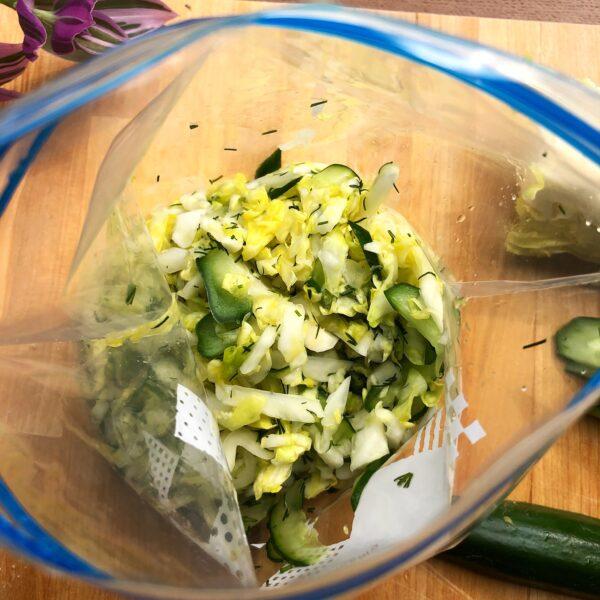
Seal the bag and use your hands to massage the contents. Squeeze all air out of the bag, reseal, and place under weighted books or inside a pickle press. Store, weighted like this, for a minimum of 30 minutes or up to 12 hours at room temperature, or up to 24 hours if refrigerated. (Any longer, and your vegetables will become too saturated with salt and will break down further, turning limp.)
Rinse in cold water, drain, and gently squeeze out any remaining water. Enjoy these pickles impatiently—that is, immediately—or keep fresh in the refrigerator for up to an additional day. Remove the kombu just before eating, as it will be too tough for most.
You may present individual servings of your tsukemono in tiny dishes, squeezed together to form small, dense mountains, to accompany a meal, or pile it into one heap in a bowl for the table, the way you might with a family-style salad.

